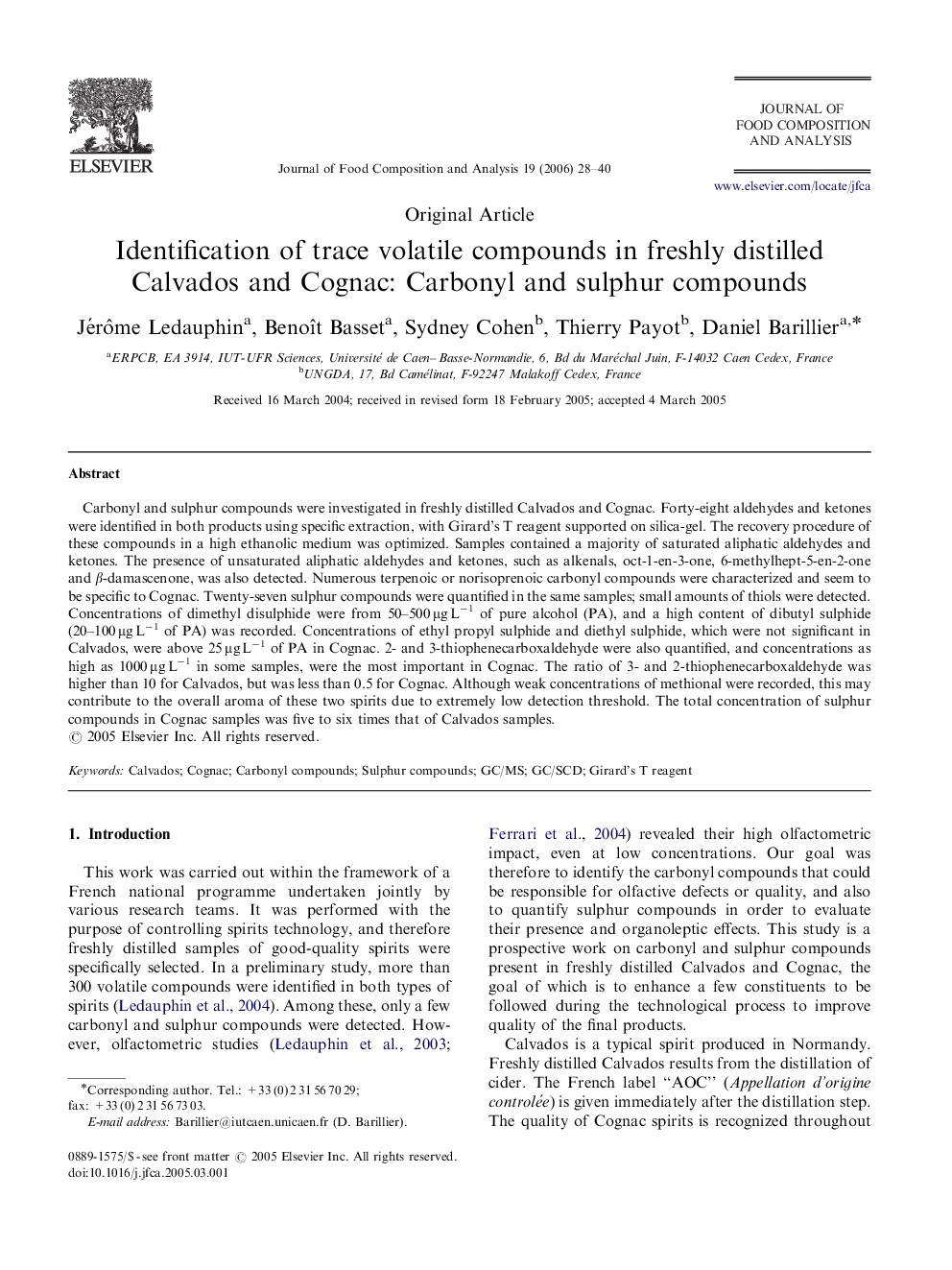| Article ID | Journal | Published Year | Pages | File Type |
|---|---|---|---|---|
| 1218922 | Journal of Food Composition and Analysis | 2006 | 13 Pages |
Carbonyl and sulphur compounds were investigated in freshly distilled Calvados and Cognac. Forty-eight aldehydes and ketones were identified in both products using specific extraction, with Girard's T reagent supported on silica-gel. The recovery procedure of these compounds in a high ethanolic medium was optimized. Samples contained a majority of saturated aliphatic aldehydes and ketones. The presence of unsaturated aliphatic aldehydes and ketones, such as alkenals, oct-1-en-3-one, 6-methylhept-5-en-2-one and ββ-damascenone, was also detected. Numerous terpenoic or norisoprenoic carbonyl compounds were characterized and seem to be specific to Cognac. Twenty-seven sulphur compounds were quantified in the same samples; small amounts of thiols were detected. Concentrations of dimethyl disulphide were from 50–500 μg L−1 of pure alcohol (PA), and a high content of dibutyl sulphide (20–100 μg L−1 of PA) was recorded. Concentrations of ethyl propyl sulphide and diethyl sulphide, which were not significant in Calvados, were above 25 μg L−1 of PA in Cognac. 2- and 3-thiophenecarboxaldehyde were also quantified, and concentrations as high as 1000 μg L−1 in some samples, were the most important in Cognac. The ratio of 3- and 2-thiophenecarboxaldehyde was higher than 10 for Calvados, but was less than 0.5 for Cognac. Although weak concentrations of methional were recorded, this may contribute to the overall aroma of these two spirits due to extremely low detection threshold. The total concentration of sulphur compounds in Cognac samples was five to six times that of Calvados samples.
